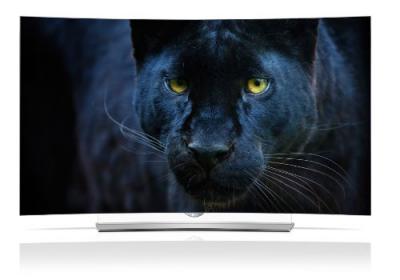An introduction to OLED displays
What is an OLED?
OLED (Organic Light Emitting Diodes) is a flat light emitting technology, made by placing a series of organic thin films between two conductors. When electrical current is applied, a bright light is emitted. OLEDs are emissive displays that do not require a backlight and so are thinner and more efficient than LCD displays (which do require a white backlight).
OLED displays are not just thin and efficient - they provide the best image quality ever and they can also be made transparent, flexible, foldable and even rollable and stretchable in the future. OLEDs represent the future of display technology!
OLED vs LCD
An OLED display have the following advantages over an LCD display:
- Improved image quality - better contrast, higher brightness, fuller viewing angle, a wider color range and much faster refresh rates.
- Lower power consumption.
- Simpler design that enables ultra-thin, flexible, foldable and transparent displays
- Better durability - OLEDs are very durable and can operate in a broader temperature range
OLEDs have some disadvantages, though: their lifetime is limited, and currently they are more expensive than LCDs (although the price gap continues to decrease).
The future - flexible and transparent OLED displays
As we said, OLEDs can be used to create flexible and transparent displays. This is pretty exciting as it opens up a whole world of possibilities, some of which are already on the market!
- Curved OLED displays, placed on non-flat surfaces
- Foldable OLEDs and rollable OLEDs which can be used to create new mobile devices
- Wearable OLEDs, like e-tattoos or skin patches
- Transparent OLEDs embedded in windows or car windshields
- And many more we cannot even imagine today...
Flexible OLEDs are already on the market for many years (in smartphones, wearables and other devices). In 2019, Samsung introduced the first foldable phone, the Samsung Galaxy Fold, and since then foldable devices are increasing in popularity. we are expecting to see the first rollable/slidable devices reaching the market soon!
How do OLEDs work?
An OLED is made by placing a series of organic thin films between two conductors. When electrical current is applied, a bright light is emitted. Click here for a more detailed view of the OLED technology.

If you wonder - OLEDs are "organic" because they are made from carbon and hydrogen. There's no connection to organic food or farming - although OLEDs are very efficient and do not contain any bad metals, and are light and thin - so it is rather environmental friendly.
Where can I find OLED displays today?
OLEDs are used today in smartphones (it is actually the dominant smartphone display technology), laptops, tablets, motniros, wearables, TVs - and more. Almost a billion AMOLED screens are produced each year, by Samsung Display, LG Display, BOE, and others. The OLED industry and market are growing as more and more devices choose OLEDs over LCD displays. Here's our list of products and gadgets with an OLED display. If you are looking to adopt an OLED display in your own device, our OLED Marketplace is the world's most comprehensive OLED display catalog.

OLED TVs
OLED is the best display technology - and indeed OLED panels are used today to create the most stunning TVs ever - with the best image quality combined with the thinnest sets ever. Almost 10 million OLED TVs ship each year, and the market is expected to grow as consumers and experts both agree on the superior image quality of OLED displays.
Only two companies produce OLED TV panels: LG Display (with its WOLED technology) and Samsung Display (with its QD-OLED technology). LGD and SD provide their OLED TV panels to make TV makers - including LG Electronics, Samsung Electronics, Panasonic, Sony, Philips and others.
OLED lighting
OLEDs can be used to create excellent light source. OLED lighting panels offer highly uniform area lighting and can be flexible, efficient, light, thin, transparent, color-tunable and more. OLEDs enable new designs and these devices emit healthier light compared to CFLs and LED lighting devices. The OLED Lighting industry haven't yet managed to reach mass production, but adoption in niche applications, mainly automotive, is on the rise.
About OLED-Info.com
OLED-Info is a knowledge hub focused on the OLED industry, in operation since 2004. We provide services to the OLED industry and community. Check out OLED-Info's sitemap to view our complete list of OLED resources.
Be sure to subscribe to our free newsletter if you want to stay updated on the OLED industry!



